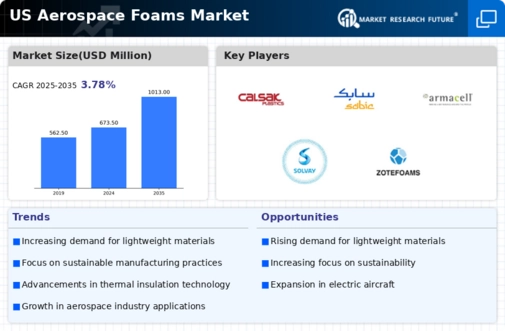The US Aerospace Foams Market is characterized by its dynamic nature, driven by advancements in technology and increasing demands for lightweight and efficient materials in aerospace applications. Competitive insights reveal a landscape where companies are focusing on innovation, quality, and performance to capture a significant share of the market. The market features several key players who are continuously striving to enhance their offerings and integrate sustainable practices into their product lines. As the aerospace industry evolves, these companies are also adapting to shifts in consumer preferences, regulatory requirements, and the push for environmentally friendly materials.
The competitive landscape is further shaped by collaborations, partnerships, and strategic acquisitions that are aimed at expanding capabilities and extending market reach.Convex Composite is a notable player within the US Aerospace Foams Market, recognized for its specialization in advanced composite materials. The company has established a strong presence through its innovative product offerings that cater specifically to the aerospace sector. One of Convex Composite’s key strengths lies in its exceptional research and development capabilities, which enable the company to stay ahead of industry trends and provide high-performance foams that meet stringent aerospace standards.
By focusing on producing lightweight and durable materials, Convex Composite not only enhances the efficiency of aircraft but also contributes to the overall safety and reliability essential for aerospace applications. The company's commitment to quality and customer satisfaction further solidifies its competitive position in the market.Huntsman Corporation operates prominently in the US Aerospace Foams Market, offering a diverse range of products tailored to aerospace manufacturing needs. The company's key offerings include polyurethane foams and specialty adhesives that are extensively used in aircraft interiors and components.
Huntsman’s robust market presence can be attributed to its strategic initiatives in research and innovation, allowing the company to develop cutting-edge materials that are lightweight, resilient, and compliant with aerospace industry standards. Strengths such as a comprehensive product portfolio, strong customer relationships, and a commitment to sustainability enhance Huntsman's competitive edge. Furthermore, recent mergers and acquisitions have allowed Huntsman to expand its market reach and enhance its technological capabilities, positioning it strongly against competitors in the evolving dynamics of the aerospace foam sector in the United States.






